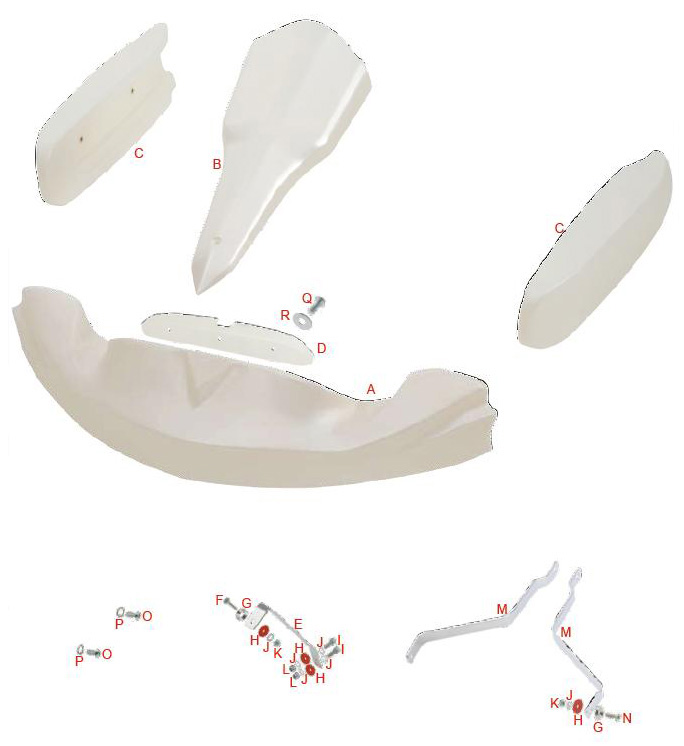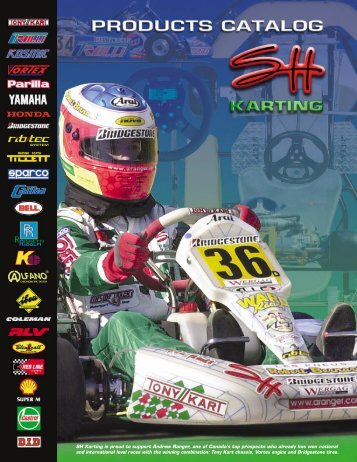Tony Kart Setup Guide

If I can't find the official chassis setup guide, then I'm going to post the next. To dial in my current chassis, a 1994 Tony Kart with a KT100 on it.
A name that has made the history RACER, WINNING GENERATION The 401S is the extreme evolution of the Tony Kart Racer. Born in 2000, through its several editions over the years, it has been able to collect 7 World Championships and many international titles. What are the developments on the 401S? A reduction of the total weight, several details (the new floor plate, the sprocket’s hub with two screws, the steering column support, the front bumper connection) and a renewed rear brake caliper for the single speed version.
What does not change? The philosophy behind the project based on the use of high quality raw materials and sophisticated machinery, which eliminate the possibility of error; the constant, continuous, ceaseless development given by the information gathered in dozens of international competitions faced by the Tony Kart Racing Team. M6 fairings DESIGNED BY THE WIND In karting fractions of seconds are very important. This is the reason why Tony Kart, thanks to OTK Kart Group R&D department, has decided to explore, with a scientific approach, a field which is still known a little to karting: aerodynamics. And so, thanks to intense wind tunnel testing, the OTK M6 fairings are born (CIK-FIA 2015-2020 homologated), able to increase aerodynamics and to convey the air flow in the most appropriate and functional areas. Nevertheless, these studies, have indelibly marked also the graphic design of the top-range Tony Kart chassis, now a real symbol able to make their mark in the circuits all over the world.
The topics of caster and camber are quite difficult to grasp for many in karting. Heck, it’s hard enough to just remember how to spell cast er when referring to front-end geometry. Cast or, on the other hand, is a lubricant commonly used in 2 cycle fuel mix.
Let’s first take a look at why caster is necessary and why it is so critical in karts. The solid rear axle design in karts makes it necessary for the inside tire to “unload,” or lift when cornering to enable the kart to turn.
Caster is the main contributor to this process, although scrub radius, spindle kingpin inclination, and frame design also play an integral role. Caster can be measured by the angle the kingpin bolt leans back toward the driver. This number can range anywhere from 8 ° to over 20 °.
On the contrary, cars do not use nearly as much caster as karts (just a few degrees) because of the rear tires are independent and can turn at different rates Now onto how it affects the handling of the kart The first thing you will notice when a kart has a considerable amount of caster is the increased amount of strength it takes to turn the steering wheel. Caster causes weight to move diagonally as you turn the wheel. As caster angle increases, you mechanically move more weight given the same degree of steering input. Think of the kart as an “X.” The RF and LR are tied together, as are the LF and RR. The inside front wheel pushes into the track, while the outside front wheel travels in an upward arc away from the pavement. Again, this change in wheel height is to achieve wheel lift at the inside rear tire and allow the kart to turn without understeering (pushing).
Without caster the kart would constantly understeer, be inherently slow, and burn off the front tires in the process. How much caster should you run and when should you adjust it?

That is a key question when setting up a chassis. It is best to start at the factory recommended setting and adjust from there. If you deviate too far from this setting and are struggling, it is recommended that you start over at the factory settings. Many generalizations are made in karting. Unfortunately, there is rarely one concrete answer for any given situation. That said, I will try to shed some light on situations that dictate varying degrees of caster. It is generally accepted that: Low HP classes - less caster (typically sportsman and 4cycle) High HP classes- more caster (TAG, shifter, etc.) Wet conditions- more caster or max caster Tracks with tighter corners (ie.
180 ° hairpins)- more caster Tracks with wide sweeping corners- less caster The most challenging decision is deciding whether increasing or decreasing caster will “free up” your kart. A “free” handling kart will release/accelerate out of the corner as quickly as possible. It will have as much forward grip as possible without binding the kart. To do this you must have some differential affect, and that is where caster again comes into play. To assess which direction you need to go with caster (increase or decrease) requires a driver that has a good feel for the handling of their respective chassis.
Unfortunately, this is often not the case. As an example, the most overused and misleading term in karting is the word “tight.” I hear it almost constantly when a handling problem persists. It is considered by many, mistakenly, as an all-encompassing term, which makes it extremely difficult to pinpoint the root of the problem. I’ve heard it used to describe many different handling issues including: understeer (pushing), hard to steer, hopping, and stuck to the track. Although caster is not necessarily the best decision for each handling situation, here is a quick cheat sheet: When to increase caster Understeer (push) Rear is stuck in the track (not lifting) Kart is lying flat through the corner Rain Conditions When to decrease caster Kart is physically hard to steer- decrease caster Oversteer (loose)- decrease caster Hopping-Decrease caster Excessive wheel lift of the inside rear tire Two-wheeling Another important front end adjustment is Camber. Camber controls the contact patch of each front tire.
Tony Kart Setup Guide
A kart with negative camber will have the top of the tires leaning inward towards the driver, while the tire will lean outward away from the driver with positive camber. More positive camber will increase contact patch and induce sidewall flex, resulting in an increase in front grip. Negative camber will have the opposite effect. Negative Positive Zero / / To measure camber you first need to choose a tool. Many in 2 cycle racing use the popular (measured in millimeters) that can be used on the kart stand. Many 4 cycle racers use a that threads onto the front spindle made by Longacre, Intercomp, etc.
(measured in degrees). These need to be used on a perfectly level surface to provide an accurate readout. You can also use with a.
Whatever method you choose it is important to always do it the same way so you have a controlled reference point. Sometimes the most challenging decision on camber is simply where to start. The easy choice is to first consult the manufacturer. If you don’t have that option you need to take into account a few different things:. Tire compound/design. Class/speed. Track temp/grip level A slight negative setting is commonplace on most karts as a starting point.
Kart Setup Guide
About 2mm or 1/2 ° negative is acceptable.